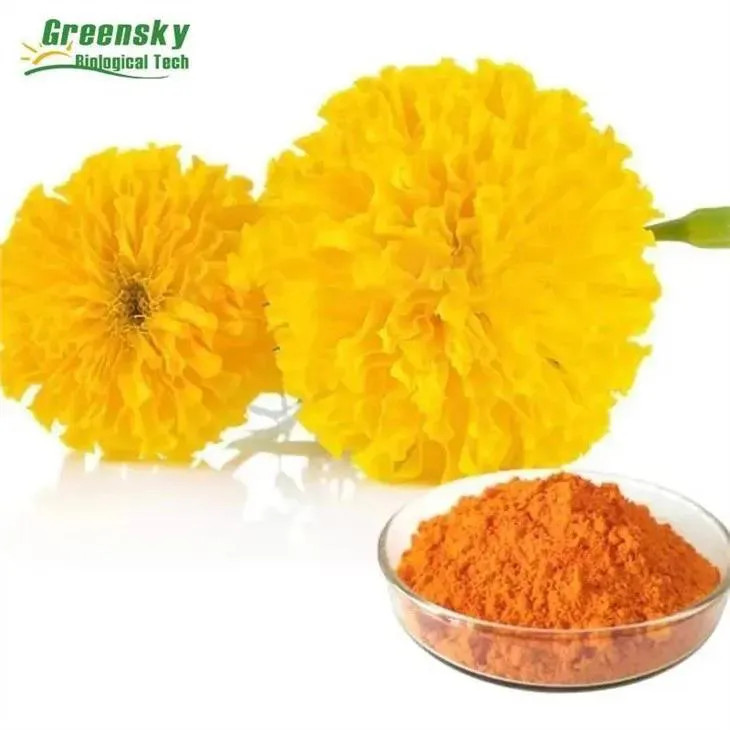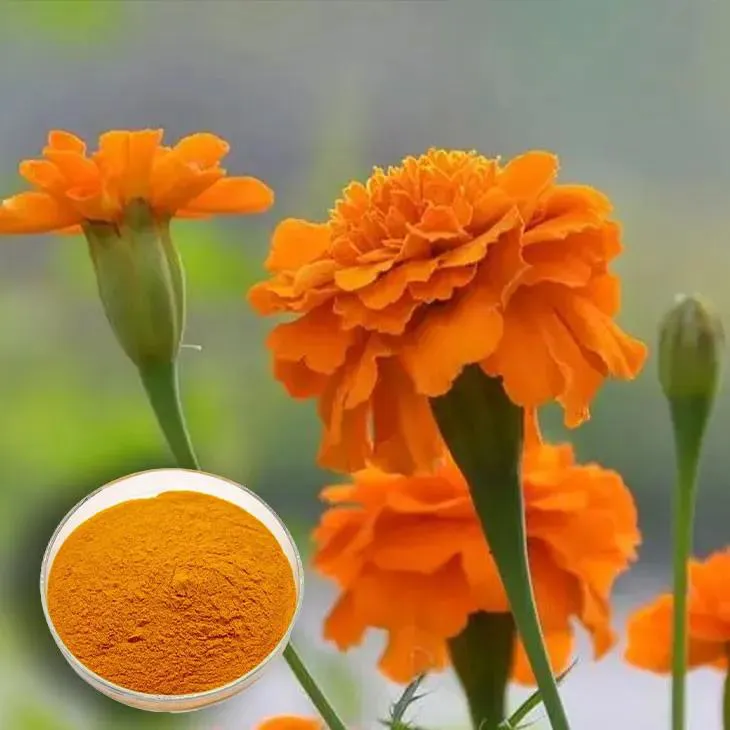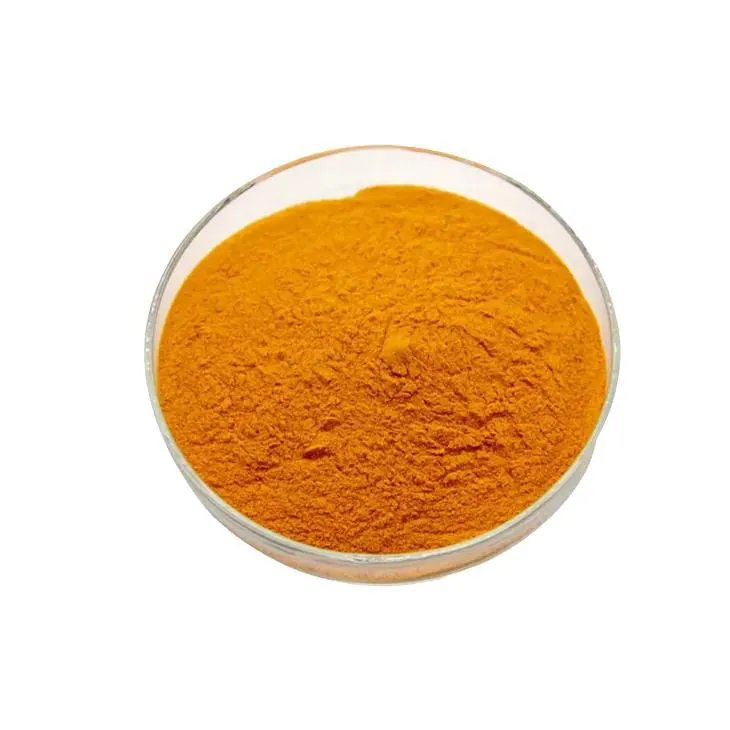- 0086-571-85302990
- sales@greenskybio.com
Bulk purchase of marigold extract.
2024-11-27

1. Introduction
Marigold Extract is a highly valuable substance that has found its way into numerous applications across various industries. Whether it is in the food, pharmaceutical, or cosmetic sectors, the demand for high - quality Marigold Extract is on the rise. For those considering a bulk purchase of Marigold Extract, a thorough understanding of several key factors is essential to ensure a satisfactory investment.

2. Importance of Marigold Origin
The origin of the marigolds used for extraction plays a crucial role. Different regions around the world offer distinct environmental conditions that can significantly impact the composition of marigold extract.
2.1 Soil Conditions
The type of soil in which marigolds are grown can affect the levels of active components. For example, soil rich in certain minerals may enhance the production of specific compounds within the marigolds. Well - drained and fertile soils are often associated with healthier marigold plants that can potentially yield better - quality extracts.
2.2 Climate Influence
- Marigolds thrive in different climates, but some climates are more conducive to the production of high - quality flowers for extraction. Regions with a moderate temperature range, not too hot or too cold, are often favorable.
- Sunlight exposure is another vital aspect. Marigolds require an adequate amount of sunlight to photosynthesize and produce essential compounds. For instance, areas with optimal sunlight exposure, such as regions closer to the equator in some cases, may result in marigolds with higher levels of lutein, a key active ingredient in marigold extract.
2.3 Cultivation Methods
- Organic cultivation methods are becoming increasingly popular. Marigolds grown organically may have a different chemical profile compared to those grown using conventional farming techniques. Organic marigolds are less likely to contain residues of pesticides or synthetic fertilizers, which can be a significant advantage, especially for applications in the food and pharmaceutical industries.
- Proper spacing between marigold plants during cultivation can also impact their growth and the subsequent quality of the extract. Adequate spacing allows for better air circulation, reducing the risk of diseases and promoting healthier plant development.

3. Extraction Methods and Their Impact
The method used to extract the active components from marigolds can have a substantial influence on the quality of the final extract. Different extraction techniques offer different levels of purity and potency.
3.1 Solvent Extraction
- Solvent extraction is a commonly used method. It involves using solvents such as ethanol or hexane to dissolve the active components from the marigold flowers. However, this method may leave behind some solvent residues, which need to be carefully removed to meet regulatory requirements, especially in the pharmaceutical and food industries.
- The choice of solvent can also affect the selectivity of the extraction. For example, different solvents may extract different subsets of compounds from the marigolds, potentially influencing the overall efficacy of the extract.
3.2 Supercritical Fluid Extraction
- Supercritical fluid extraction, often using carbon dioxide as the supercritical fluid, is known for producing high - quality extracts. The supercritical state of carbon dioxide has properties that allow it to efficiently extract the active ingredients while leaving behind minimal impurities.
- This method can result in an extract with a relatively pure composition of active ingredients, making it highly desirable for applications where purity is of utmost importance, such as in high - end pharmaceuticals or nutraceuticals.
3.3 Steam Distillation
- Steam distillation is mainly used for extracting volatile compounds from marigolds. While it may not be the most suitable method for extracting all the active components, it can be useful for obtaining certain essential oils or aromatic compounds present in marigolds.
- The process of steam distillation is relatively gentle compared to some other methods, which can be beneficial in preserving the integrity of some heat - sensitive compounds.

4. Regulatory Compliance
When making a bulk purchase of marigold extract, regulatory compliance is a non - negotiable aspect, especially when the extract is intended for use in the food and pharmaceutical industries.
4.1 Food - Related Regulations
- In the food industry, marigold extract is often used as a natural colorant or a source of nutrients. Regulatory bodies around the world have set limits on the use of marigold extract in food products to ensure consumer safety. For example, there are regulations regarding the maximum allowable levels of certain active ingredients, such as lutein, in food items.
- The extract must also meet strict quality and purity standards. This includes requirements for the absence of contaminants, such as heavy metals, pesticides, and microbial contaminants, which could pose a risk to consumers.
4.2 Pharmaceutical Regulations
- For pharmaceutical applications, the regulatory requirements are even more stringent. Marigold extract may be used in medications or dietary supplements, and in such cases, it must be proven to be safe and effective through rigorous scientific testing.
- Good Manufacturing Practice (GMP) regulations govern the production process of marigold extract for pharmaceutical use. This includes aspects such as proper documentation of the extraction process, quality control at every stage of production, and strict hygiene and safety standards in the manufacturing facility.

5. Packaging and Storage Considerations
The packaging and storage conditions of marigold extract are critical for maintaining its quality over time. Proper packaging can protect the extract from various factors that could lead to the degradation of its active components.
5.1 Packaging Materials
- Dark - colored glass bottles are often preferred for packaging marigold extract. The dark color helps to protect the extract from light, which can cause photodegradation of certain compounds. Glass is also a chemically inert material, reducing the risk of chemical interactions between the packaging and the extract.
- Some extracts may also be packaged in laminated foil pouches or other light - and oxygen - barrier materials. These types of packaging can effectively prevent the ingress of oxygen and moisture, which are known to degrade the quality of marigold extract.
5.2 Storage Conditions
- Marigold extract should be stored in a cool, dry place. High temperatures can accelerate the degradation of active components, so a temperature - controlled storage environment is ideal. A typical recommended storage temperature is around 4 - 8°C, depending on the specific type of extract.
- Humidity control is also important. Excessive moisture can cause the growth of mold or other microorganisms, which can contaminate the extract. Storage areas with relative humidity levels below 60% are generally considered suitable for marigold extract storage.
6. Conclusion
In conclusion, a bulk purchase of marigold extract is a significant decision that requires careful consideration of multiple factors. The origin of the marigolds, extraction method, regulatory compliance, and packaging and storage conditions all play important roles in determining the quality and suitability of the extract for various applications. By thoroughly evaluating these aspects, buyers can make an informed decision and ensure that they obtain high - quality marigold extract that meets their specific requirements.
FAQ:
What factors should be considered when making a bulk purchase of marigold extract?
The origin of marigolds is important as those from different regions may have different levels of active components due to soil, climate and cultivation method differences. The extraction method also matters as different techniques can lead to extracts with different purities and potencies. Regulatory compliance is necessary in food and pharmaceutical industries. Additionally, packaging and storage conditions are crucial for maintaining the quality of the extract over time.
Why does the origin of marigolds matter in a bulk purchase?
The origin matters because marigolds grown in different regions may have varying levels of active components. For example, marigolds from regions with good sunlight exposure may produce more lutein due to the influence of soil, climate and cultivation methods.
How does the extraction method affect the marigold extract in bulk purchase?
Different extraction methods can yield extracts with different purities and potencies. For instance, supercritical fluid extraction is known for producing high - quality extracts with a relatively pure composition of active ingredients.
What is the importance of regulatory compliance in bulk purchasing marigold extract?
In the food and pharmaceutical industries, strict regulations govern the use of marigold extract. Regulatory compliance is important to ensure the safety and efficacy of the extract.
Why are packaging and storage conditions crucial for marigold extract in bulk purchase?
Proper packaging protects the extract from factors like light, moisture and oxygen which can degrade its active components. So, good packaging and storage conditions are crucial for maintaining the quality of the marigold extract over time.
Related literature
- Marigold Extract: Properties and Applications"
- "The Science behind Marigold Extract Production"
- "Regulations in Marigold Extract Usage in the Food Industry"
- ▶ Hesperidin
- ▶ citrus bioflavonoids
- ▶ plant extract
- ▶ lycopene
- ▶ Diosmin
- ▶ Grape seed extract
- ▶ Sea buckthorn Juice Powder
- ▶ Beetroot powder
- ▶ Hops Extract
- ▶ Artichoke Extract
- ▶ Reishi mushroom extract
- ▶ Astaxanthin
- ▶ Green Tea Extract
- ▶ Curcumin Extract
- ▶ Horse Chestnut Extract
- ▶ Other Problems
- ▶ Boswellia Serrata Extract
- ▶ Resveratrol Extract
- ▶ Marigold Extract
- ▶ Grape Leaf Extract
- ▶ blog3
- ▶ blog4
-
Chinese lotus leaf extract suppliers.
2024-11-27
-
Nature's Bounty Tongkat Ali Extract Powder.
2024-11-27
-
Nature's Bounty lotus leaf extract.
2024-11-27
-
Organic Almond Extract Powder Supplier.
2024-11-27
-
Bulk purchase of camu - camu extract.
2024-11-27
-
Black Pepper Extract
2024-11-27
-
Sea buckthorn Juice Powder
2024-11-27
-
Black Rice Extract
2024-11-27
-
melatonin extract
2024-11-27
-
Licorice Root Extract Powder
2024-11-27
-
Sugarcane Extract
2024-11-27
-
Centella Asiatica Extract
2024-11-27
-
Maitake Mushroom Extract
2024-11-27
-
Red Wine Extract
2024-11-27
-
Mulberry Extract
2024-11-27





















